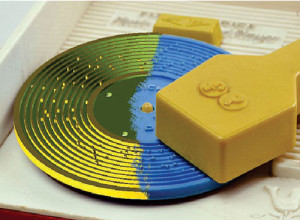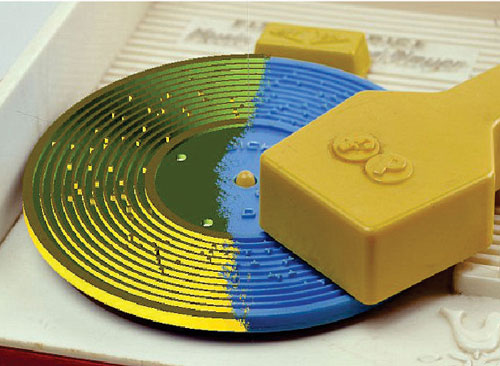1910s: The First World War of 1914-1918 saw millions of men going to fight around the world. With women filling the jobs left vacant by the men’s absence, a desire for more practical women’s shoes for use in the factories was born. However, as shortages started to bite, the idea of being wasteful was severely criticized. With a lack of fabrics, dresses became shorter and the same design of lace-up boot that had been worn at the turn of the century was now viewed as practical rather than ‘old-fashioned’.
Suede became popular, and ballet-style pumps were decorated with a variety of removable buckles made from steel and decorated. Once peace was declared, fashions quickly changed in an effort to throw off the depression of wartime austerity.
1920s: This decade witnessed incredible changes in fashion in general – more liberal views on acceptable dress codes were forged. Dance crazes like the Charleston, which demanded a securely-fastened shoe with a low heel and a closed toe, influenced standard shoe design tremendously.
The discovery of ancient Egyptian Pharaoh Tutankhamen’s tomb in 1922 served to encourage a love of all things exotic, and this was reflected in shoe designs of the age. Brilliantly-dyed leather, metallic finishes and bright fabrics were used to create never-before seen designs, and rich brocades, satin, silk and velvet were often embellished with metallic overstitching, embroidery and fake gemstones. Heels were often decorated with crystals, often in Art Deco designs.
1930s: This was a decade that saw the world plunged into a financial depression after the US stock market crash of 1929. As in the First World War years, footwear needed to last longer and somber colours such as black, brown, maroon and navy blue became standard.
1940s: With the Second World War dominating everyone’s life for much of the decade, it was viewed as unpatriotic to be very fashionable during such a time of shortage. In much of the world, leather was reserved for military use, so shoemakers had to show initiative in their choice of raw materials. Reptile skins and mesh became popular alternatives.
1950s: After the war, optimism was high and stiletto heel, one of the great icons of fashion footwear, gained a massive following during the early part of the decade. Flat pumps based on the ballet shoe regained their popularity, and were quickly available in an incredibly diverse colour range.
1960s: Young people suddenly found themselves with more money to spend. This led to a decade of tremendous change, with highly experimental styles of fashion, music, art and literature. Hot pants and miniskirts took the Western youth market by storm, with flat-heeled high boots proving particularly popular. The hippie culture also became a major fashion and, as the race to be the first on the moon accelerated, new metallic ‘space-age’ materials (including coated plastic) were increasingly used by the world’s shoemakers.
1970s: Celebrities dressed to shock in the 1970s, with punk and glam rock encouraging dramatic styles that quickly found their way onto the high street. The birth of disco demanded comfortable dancing shoes, and strappy sandals became the choice of millions.
1980s: A new group of ambitious consumers with money to spend – well-paid young professionals nicknamed ‘Yuppies’ – looked to designer labels to emphasis their wealthy status in life, and retailers were only too pleased to supply just what they wanted. Many ‘new’ styles were actually updated versions of popular shoes from the 40s and 50s, with menswear influencing women’s fashions in the form of lace-up brogues.
1990s: While some glittering styles continued to hit the high street, the excesses of previous decades were replaced by more somber designs before the end of the millennium. A number of shoe fashion revivals took place, with 1970s-style chunky platform shoes regaining their popularity and pastel-colored ballet pumps once again proving to be a best buy.
2000s: Heels began to rise once more at the beginning of the 21st century, and the popularity of designer labels showed no signs of flagging. Embellishment of shoes with crystals, beads, embroidery and exotic leathers arrived yet again – and has since proved to be a regular part of the footwear designer’s palette.
In the Middle East, heels were added to shoes to lift the foot from the burning sand.Pointed toes on shoes became symbol of wealth and power in Europe. They remained mostly in fashion between 11th and 15th century World’s biggest feet belong to Brahim Takioullah. . His shoe measures 40 cms in length (European shoe size: 58) and was produced at a cost of nearly 3000 Euros. At 8’1”, he is also the second tallest man alive.Penny Gold, a retired teacher, who lives in Florida, owns a staggering 733 pairs of converse sneakers. She has spent 15 years and $15,000 on her collection.
Most expensive shoes: Judy Garland’s ruby red slippers, used by her in the 1939 movie, “The wizard of oz”, remain the highest paid slippers ever auctioned – the winning bid was for $665,000.
Largest pair for shoes: One of the main attractions of Marikina, Philippines is the World’s Largest Pair of Shoes. It is located and displayed at the Riverbanks Center. The shoes measures 5.29 meters long, 2.37 meters wide and 1.83 meters high. The heel of the shoe was measured 41 centimeters or 16 inches. The shoes were made in the year of 2002. This was displayed for the First Sapatero Festival.
Courtesy: www.satra.co.uk
 In this case, 3D printing technology has been applied to restoration. Researchers from the Lawrence Berkeley National Laboratory (LBL) have used 3D scanning technology to restore some century-old recordings made by three notable inventors that include Charles Sumner Tainter (inventor of an early telephone transmitter), Alexander Graham Bell, and his cousin Chichester Bell. These three inventors collaborated to bring about what was considered high-fidelity for audio systems (notably their graphophone) back in the 1880s. The team experimented using various mediums for their recordings that included discs and cylinders made from beeswax and cardboard, brass, and glass. Finally, they succeeded in making a series of recordings (more than 200 of them) on glass-based discs, which were sent to the Smithsonian in an effort to preserve them. However, they never sent the playback device needed to listen to the discs which were then considered useless and left to decay.
In this case, 3D printing technology has been applied to restoration. Researchers from the Lawrence Berkeley National Laboratory (LBL) have used 3D scanning technology to restore some century-old recordings made by three notable inventors that include Charles Sumner Tainter (inventor of an early telephone transmitter), Alexander Graham Bell, and his cousin Chichester Bell. These three inventors collaborated to bring about what was considered high-fidelity for audio systems (notably their graphophone) back in the 1880s. The team experimented using various mediums for their recordings that included discs and cylinders made from beeswax and cardboard, brass, and glass. Finally, they succeeded in making a series of recordings (more than 200 of them) on glass-based discs, which were sent to the Smithsonian in an effort to preserve them. However, they never sent the playback device needed to listen to the discs which were then considered useless and left to decay.